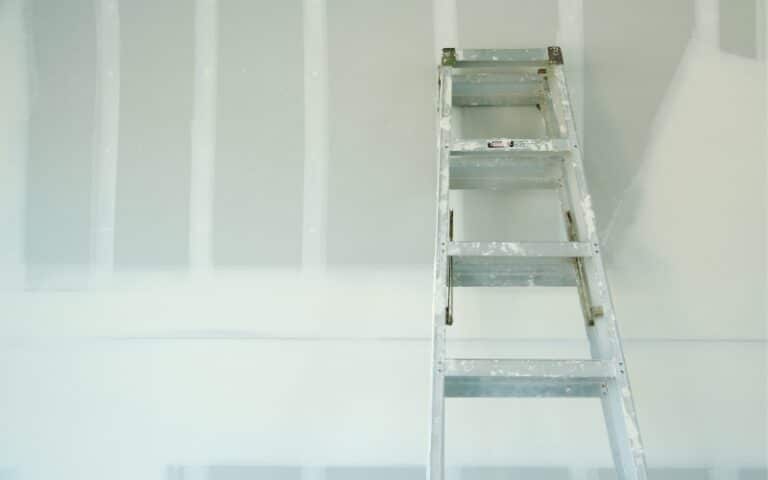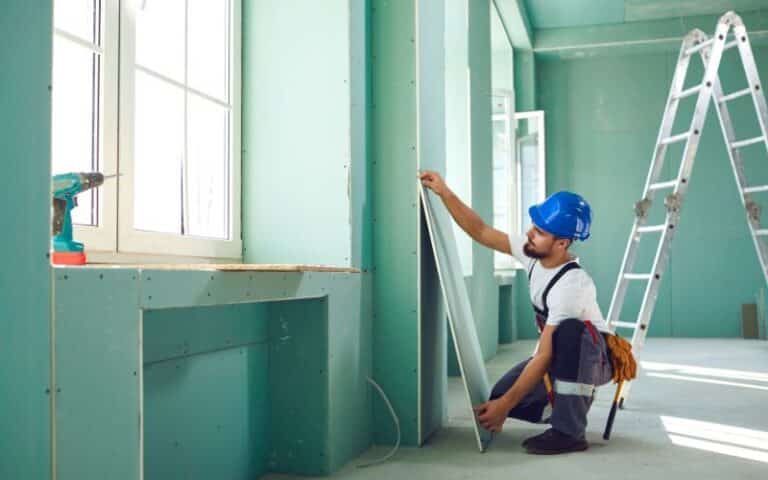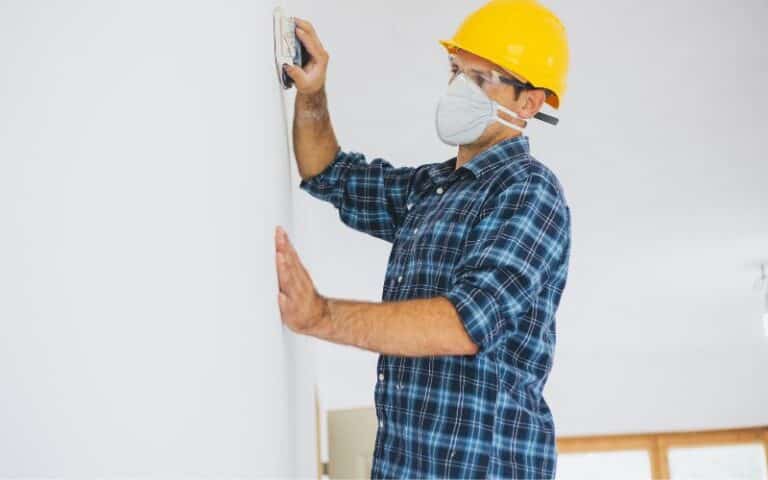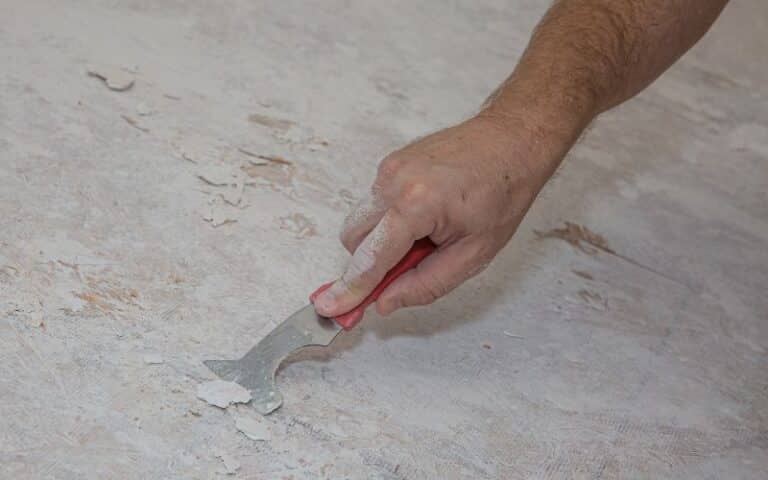You might be struggling to decide whether to use a double drywall or a resilient channel for your walls and ceiling.
This problem is common when you do not have sufficient information to make the best decision for your needs.
This article aims to solve that problem by providing a detailed comparison between double drywall and resilient channels.
We will explore the advantages of each method as well as their disadvantages.
Double drywall has impressive soundproofing qualities and increases the fire resistance of the wall or ceiling. On the other hand, a resilient channel improves sound transmission control and reduces the transfer of noise and vibrations between different spaces. It doesn’t have fire-resistant properties. Both are effective soundproofing options. However, their use will depend on your specific needs.
In this article, I will make a detailed and comprehensive comparison of these methods to enable you to make an informed choice between them.
I will cover their differences and the weight each can hold while highlighting their pros and cons.
Ready for a Drywall Quiz?
What Is the Difference Between Double Drywall and Resilient Channel?
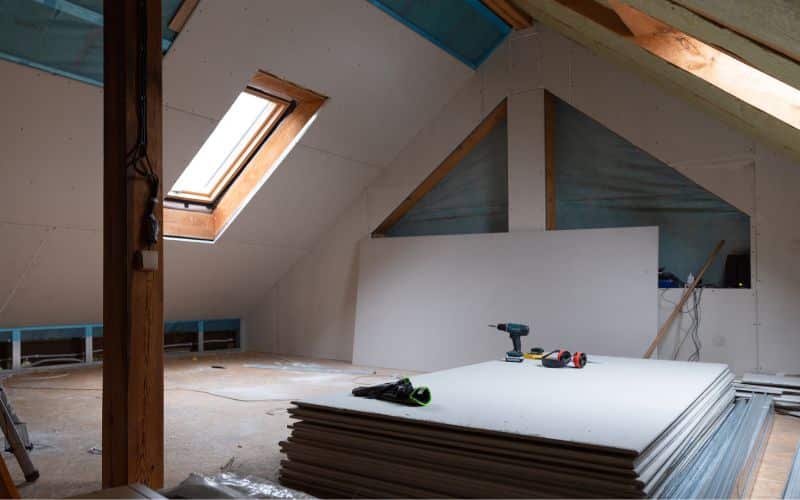
Double drywall and resilient channels are methods used to improve sound insulation in walls or ceilings.
Below is a complete breakdown of each of these methods:
#1. Double Drywall
Double drywall, also known as “double-layer drywall,” refers to a construction technique where two layers of drywall are installed on walls or ceilings instead of a single layer.
Double drywall has good soundproof capabilities and is fire-resistant.
Having two layers of drywall with an air gap in between reduces sound transmission, making it an effective method for minimizing noise transfer between rooms or from external sources.
The installation involves applying the first layer of drywall directly to the wall studs or ceiling joists using screws or nails.
Then, a second layer of drywall is attached on top of the first layer, offsetting the seams to minimize the possibility of sound leakage.
The drywall sheets are typically 4’x8′ or 4’x12′ in size. The two layers of drywall are joined together by screwing or nailing through the second layer and into the first layer.
The air gap between the two drywall layers contributes significantly to the sound insulation properties.
This air space adds mass to the wall or ceiling. Double drywall mainly improves the sound insulation for airborne noise, such as voices, music, or television.
The seams and screw or nail heads are typically covered with joint compound and taped for a smooth finish.
With double drywall, minor imperfections or surface irregularities on the original wall or ceiling remain hidden, resulting in a smoother and more aesthetically pleasing finish.
Double drywall can provide additional benefits beyond soundproofing and fire resistance. It can also help improve insulation and increase the wall’s or ceiling’s overall durability.
However, it’s important to note that double drywall installation requires proper planning, as it adds weight and thickness to the structure, which may require adjustments to framing.
It is best to consult a professional contractor or builder experienced in double drywall installation to ensure the best results and compliance with building codes and regulations.
#2. Resilient Channel
A resilient channel, also known as a hat channel, is a metal channel used in construction to create a decoupled ceiling or wall system.
The resilient channel is made of thin, flexible metal, like galvanized steel or aluminum.
It can be installed horizontally or vertically onto the studs or joists of a wall or ceiling, creating a gap between the framing and the finished surface.
The channel is attached to the framing with screws or nails, allowing it to flex and absorb vibrations.
It is important to note that the screws used for the drywall installation go through the drywall and into the resilient channel rather than directly into the studs or joists.
The resilient channel acts as a decoupling element, separating the drywall from the wall or ceiling structure.
This decoupling effect helps to minimize the transfer of vibrations and sound through the building materials.
The purpose of using resilient channels is to minimize the direct contact between the finished surface and the underlying structure.
By creating this separation, the channel helps to break the sound transmission path and reduce the transfer of airborne and impact noises.
Why Use Double Drywall?
Double drywall is a good and very effective method for walls and ceilings. It offers a range of benefits that extend beyond mere aesthetics.
Below are a few areas where Double drywall is of great value:
#1. Good Sound Insulation Properties
Double drywall appreciably improves soundproofing within a space. The primary factor contributing to double drywall’s sound insulation capabilities is its increase in mass and density.
Sound waves can easily penetrate lightweight materials. Adding an extra layer of drywall increases the overall mass of the wall or ceiling assembly.
The denser the material, the more difficult it is for sound waves to transmit through it.
The combination of two layers of gypsum board effectively acts as a barrier, impeding the passage of sound.
It is beneficial in various settings, such as residential buildings, recording studios, home theaters, or any environment where noise control is essential.
#2. Fire Resistance
Double drywall improves the fire resistance quality of a wall or ceiling assembly.
The two layers of gypsum board provide an extra layer of protection, helping to delay the spread of fire and heat.
It owes this unique ability to the water bound within its crystalline structure, which helps slow fire spread.
When exposed to heat, the water is released as steam, creating a cooling effect and acting as a barrier against the progression of flames.
#3. Smoothing Imperfections
One of the notable benefits of using double drywall is its ability to smooth out imperfections on wall surfaces.
It achieves this by combining multiple layers of gypsum board, which helps create a flawless and uniform finish.
Walls and ceilings are prone to imperfections such as dents, cracks, or uneven textures.
Single-layer drywall may not effectively hide these irregularities, especially if they are significant.
However, when you employ double drywall, the additional layer allows you to camouflage such imperfections.
The two layers of gypsum board work together to mask unevenness and create a more visually appealing surface.
Is the Resilient Channel Worth It?
Using resilient channels can provide certain benefits, but whether or not they are worth it depends on your specific needs and circumstances.
Below are a few benefits of employing resilient channels instead of double drywall:
#1. Cost-effective
Resilient channels can be more cost-effective than double drywall. Installing two layers of drywall requires additional material, labor, and time.
On the other hand, resilient channels can be installed with a single layer of drywall, reducing material and labor costs.
Furthermore, double drywall can take up more space, which may be a concern in areas with limited room or height constraints.
#2. Decoupling
Resilient channels provide a decoupling effect by separating the drywall from the underlying structure.
This decoupling breaks the direct path for sound transmission, reducing the transfer of vibrations from one side of the wall or ceiling to the other.
In contrast, double drywall relies on mass and thickness to block sound, but it doesn’t provide the same level of decoupling.
This attribute makes Resilient Channel a less bulky yet more effective alternative to blocking sound than double drywall.
#3. Installation Flexibility
Resilient channels offer greater flexibility in terms of installation. You can easily incorporate them into new construction or retrofit projects without significantly modifying the existing structure.
On the other hand, double drywall may require significant changes to framing or structural components to accommodate the additional layer of drywall.
You can check out this link on how to install Resilient Channel.
Does Double Drywall Help with Sound?
Yes, double drywall can help with soundproofing to some extent.
Adding an extra layer of drywall creates a thicker and dense barrier, which can reduce sound transmission between rooms or from the outside environment.
The effectiveness of double drywall for soundproofing depends on factors like the thickness of the drywall, the air gap between the layers, and the presence of other soundproofing materials.
If an air gap is present between the two layers of drywall, it can act as an additional sound barrier.
The trapped air can absorb sound energy and disrupt the transmission of sound waves.
The added mass of the second layer of drywall also helps to block sound waves. Sound energy is absorbed by the dense material, reducing the sound transmission through the wall.
Below is a table depicting the pros and cons of Double Drywall vs. Resilient Channel:
#1. Double Drywall
| Pros | Cons |
|---|---|
| Enhanced Fire Resistance | Increased Weight. |
| Smooth surface and appealing aesthetics. | Reduced interior space. |
| Good soundproofing capabilities. | High material cost. |
#2. Resilient Channel
| Pros | Cons |
|---|---|
| Cost-effective. | Complex installation. |
| Space Saving | Limited soundproofing |
| Enhanced soundproofing | Potential for short circuits. |
How Much Weight Can Double Drywall Hold?
Double-layered drywall will hold 35-40 pounds per square foot, while single-layered drywall will hold 15 to 20 pounds per square foot.
Double drywall’s weight depends on several factors, including the size and spacing of the fasteners used to attach the drywall to the wall studs.
The quality and condition of the underlying structure also significantly affect how much weight the drywall can hold.
It is important to note that the primary support for drywall comes from the framing behind it, typically wooden studs in residential construction.
To determine the weight capacity of double drywall, you need to consider the weight distribution, the type of fasteners used, and the spacing between them.
Suppose you have specific weight requirements or concerns.
In that case, it is best to consult a professional contractor who can evaluate your situation and provide accurate guidance based on your circumstances.


